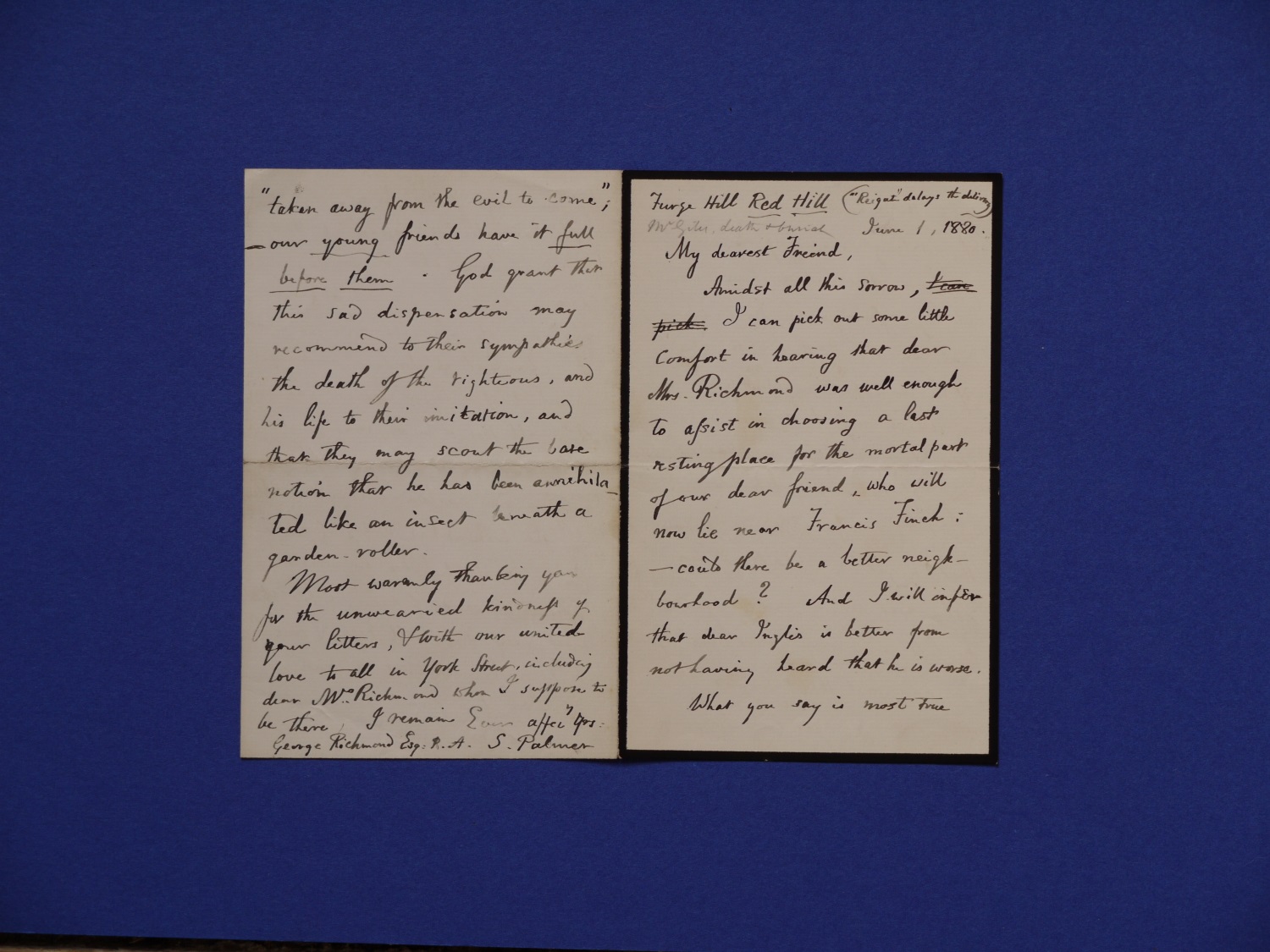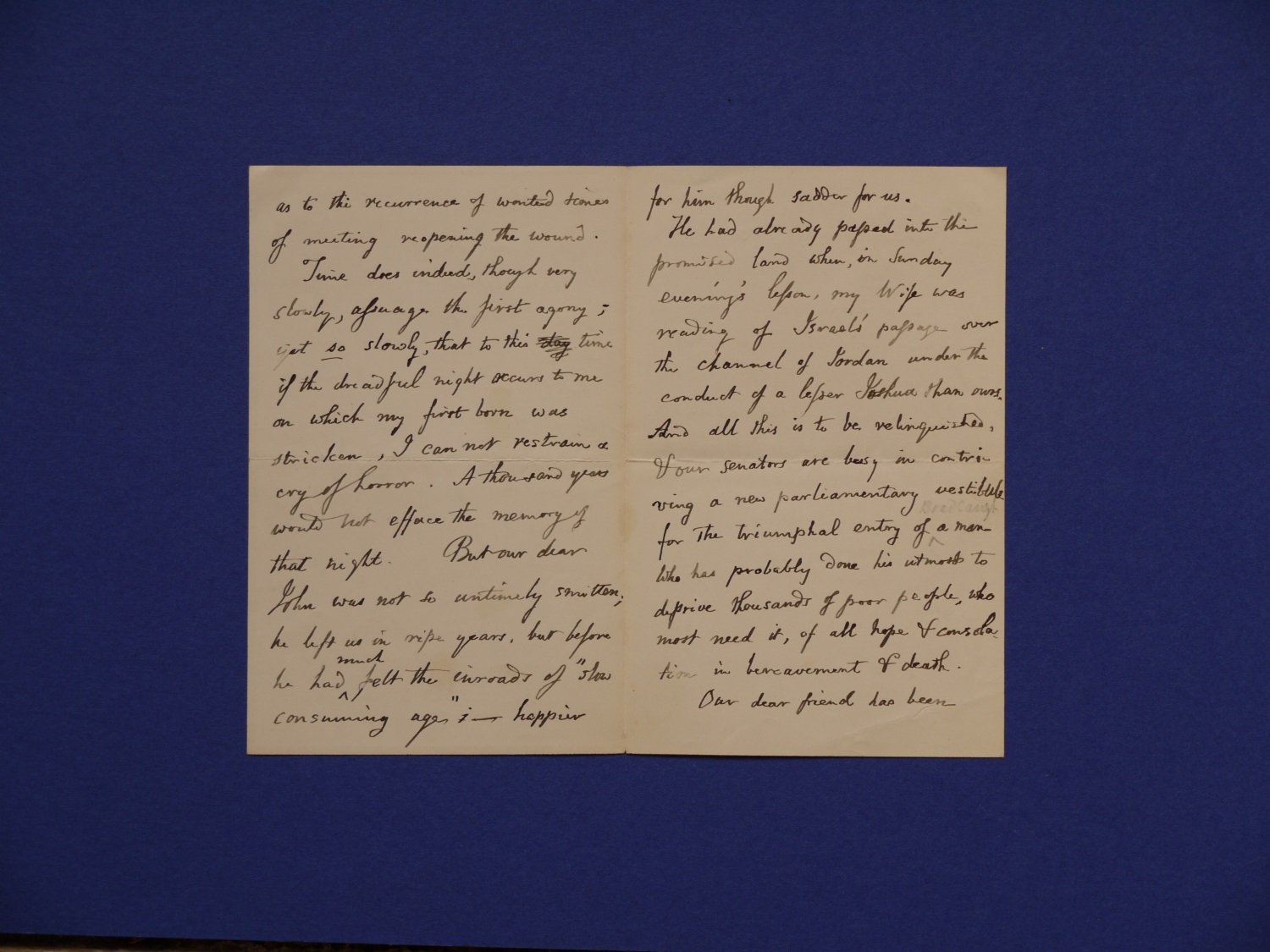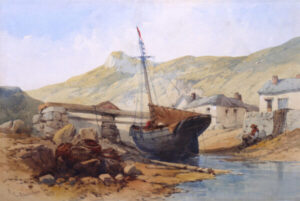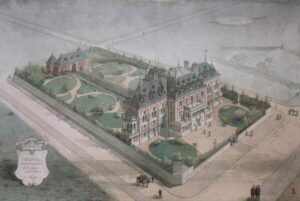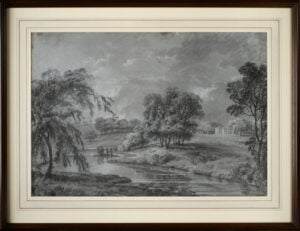Description
Content:
Furze Hill, Red Hill June 01/1880
My dearest Friend,
Amidst all this sorrow, I can pick out some little comfort in hearing that dear Mrs. Richmond was well enough to assist in choosing a last resting place for the mortal part of our dear friend who will now live near Francis Finch – could there be a better neighbourhood? And I will infer that dear Inglis is better from not having heard that he is worse. What you say is most true as to this recurrence of wanted —? of meeting reopening the wound. Time does indeed, though very slowly, assuage the first agony, yet so slowly, that to this time if the dreadful night occurs to me on which my first born was stricken, I can not restrain a cry of horror. A thousand years would not efface the memory of that night. But our dear John was not so untimely smitton, he left us in the ripe years, but before he had much felt the inroads of “slow consuming ages” I – happier for him though sadder for us. He had already passed into the promised land when, on Sunday evening’s lesson, my Eife was reading of Israel’s passage over the channel of Jordan under the conduct of a lesser Joshua than ours. And all this to be relinquished, and our senators are busy in contriving a new parlimentary vestibule for the triumphal entry of a man who has probably done his utmost to deprive thousands of poor people, who most need it, of all hope and consolation in bereavement and death. Our dear friend has been “taken away from the evil to come”, – our young friends have it full before them. God grant them this sad dispensation may recommend to their sympathies the death of the righteous, and his life to their imitation, and that they may scout the bare notion that he has been annihilated like an insect beneath a garden roller. Most warmly thanking you for the unwearied kindness of your letters, and with our united love to all in York Street, including dear W. Richmond whom I suppose to be there.
I remain ever affectionately yours,
S. Palmer
George Richmond Esq, R.A.
